How Nicolas Vandenberghe Built Chili Piper From $0 to $43 Million Revenue: The Meeting Automation Playbook
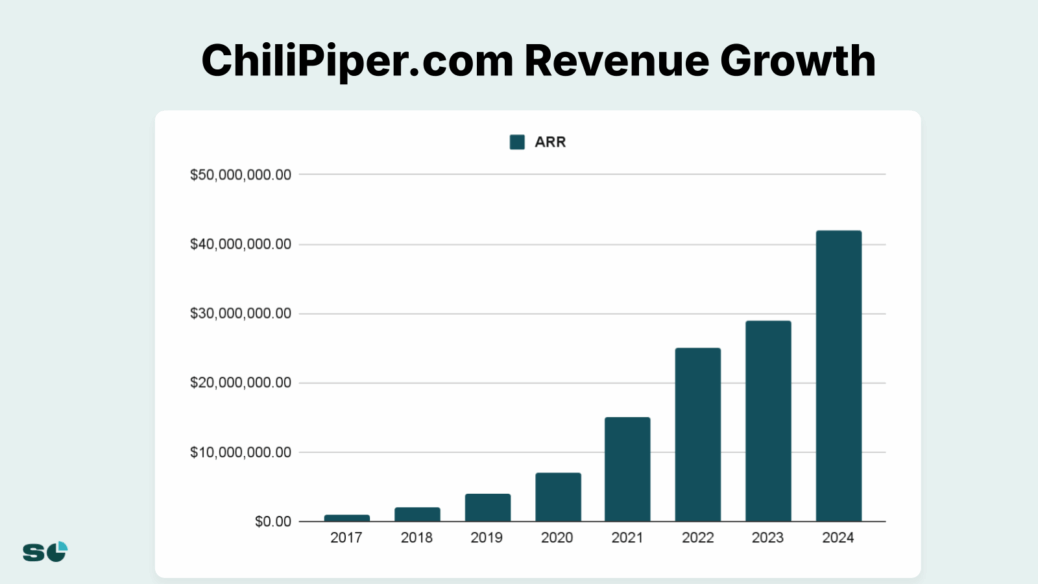
This article was written and sourced from Nicolas Vandenberghe’s keynote presentation at Founderpath’s last event. The images embedded below are from the 29 pages slide deck. The full keynote recording is here.
Nicolas Vandenberghe and his wife Alina built Chili Piper from an obscure calendar round robin tool into a $43 million revenue demand conversion platform serving 13,300 companies. In his September 2024 keynote presentation, Vandenberghe revealed how they navigated product pivots, pricing evolution, and category creation to achieve 141% net revenue retention while keeping customer acquisition costs below $8,000.
The Playbook: 5 Lessons from Chili Piper’s Journey to $43 Million Revenue
1. Start Without a Product, Just Find a Problem: Vandenberghe cold-called companies asking “Do you have a problem I can solve that you’ll prepay for?” This founder-market fit approach led to their first customer paying $20,000 upfront before any code was written.
2. Price for Resilience, Not Maximum Value: Starting at just $25/month despite delivering massive value, Chili Piper maintained growth through downturns while high-priced competitors saw revenue shrink. Their no-discount policy forced reasonable pricing from day one.
3. Multi-Product Bundling Drives 75% Higher ACV: By creating separate products that share underlying infrastructure (teams, rules, territories), Chili Piper increased ACV from $6,000 to $10,500 in six months through telecom-inspired pricing tiers.
4. Abandon Category Creation for Results: After years trying to define “meeting automation,” Vandenberghe pivoted to results-driven messaging focusing on what matters to buyers: demand conversion and qualified held meetings (QHM).
5. Go PLG When Others Go Enterprise: While investors pushed upmarket, Vandenberghe studied HubSpot’s self-serve success and rebuilt the platform for product-led growth, dropping CAC from $12,500 to under $8,000.
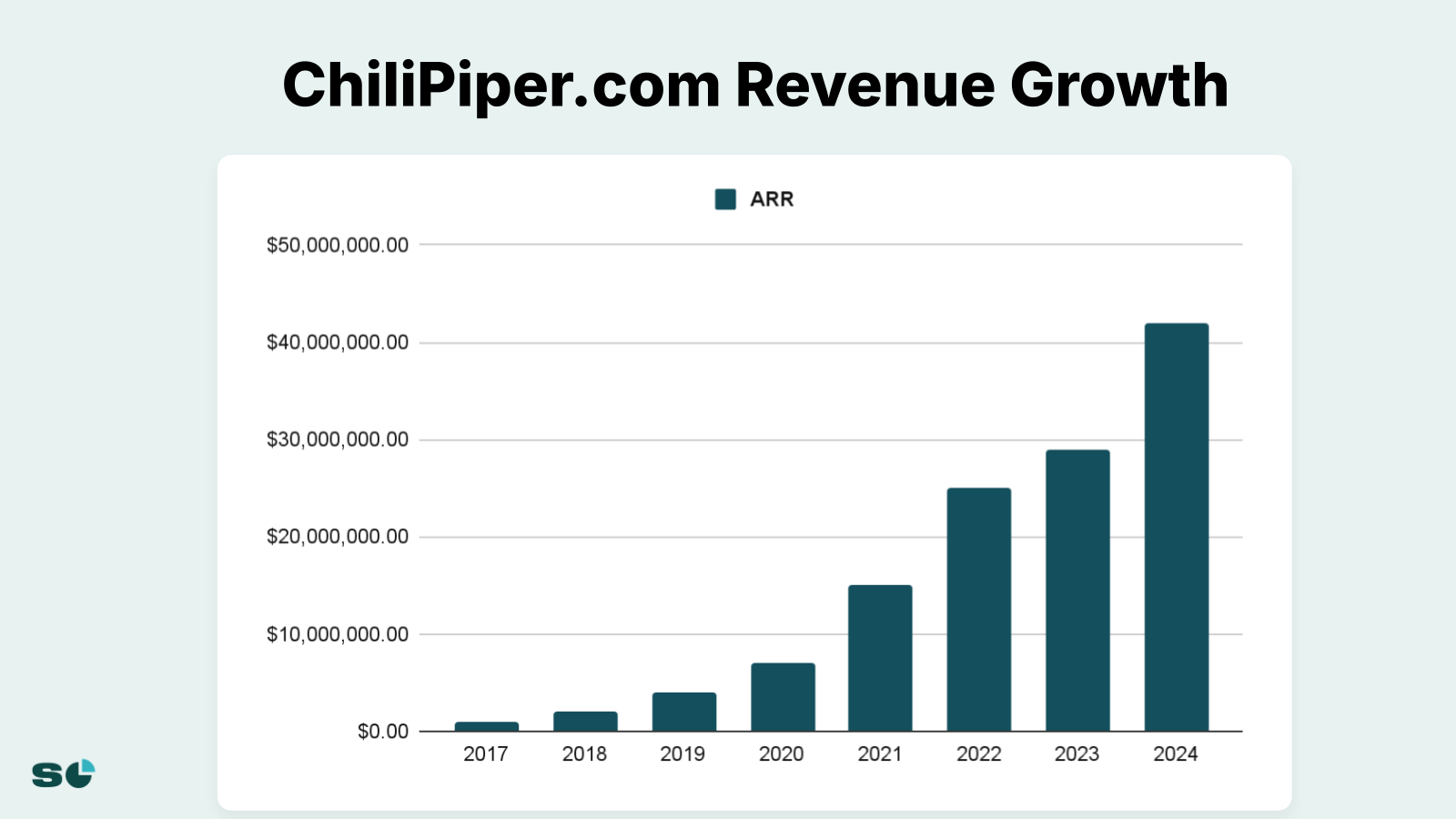
2016: Finding Product-Market Fit Through Pre-Paid Customer Development
The origin story of Chili Piper reveals a counterintuitive approach to startup building. Rather than starting with a brilliant product idea, Vandenberghe and his co-founder wife Alina began with what they called “founder-market fit.” Alina brought deep product and engineering expertise from her role as SVP at Pearson, while Nicolas brought sales and marketing experience from running sales at a $2 billion telecom company.
Their approach was deliberately backwards. Vandenberghe cold-called companies with a simple pitch: “You have a problem that I can solve and that you’re willing to prepay for.” This led them to Five9, a San Francisco company whose SDRs were taking seven minutes just to book meetings with account executives due to manual round-robin scheduling.
When Vandenberghe returned to Alina with this “opportunity,” her response was telling. “I didn’t quit my job to build that,” she said, referring to what seemed like a simple calendar tool. But they needed to start somewhere, and that first customer provided crucial validation and revenue.
The couple reached their first $1 million in ARR through one-on-one interactions with customers, attending every possible sales event and becoming synonymous with their company name. This high-touch approach laid the foundation for understanding the deeper problems in the revenue team workflow.
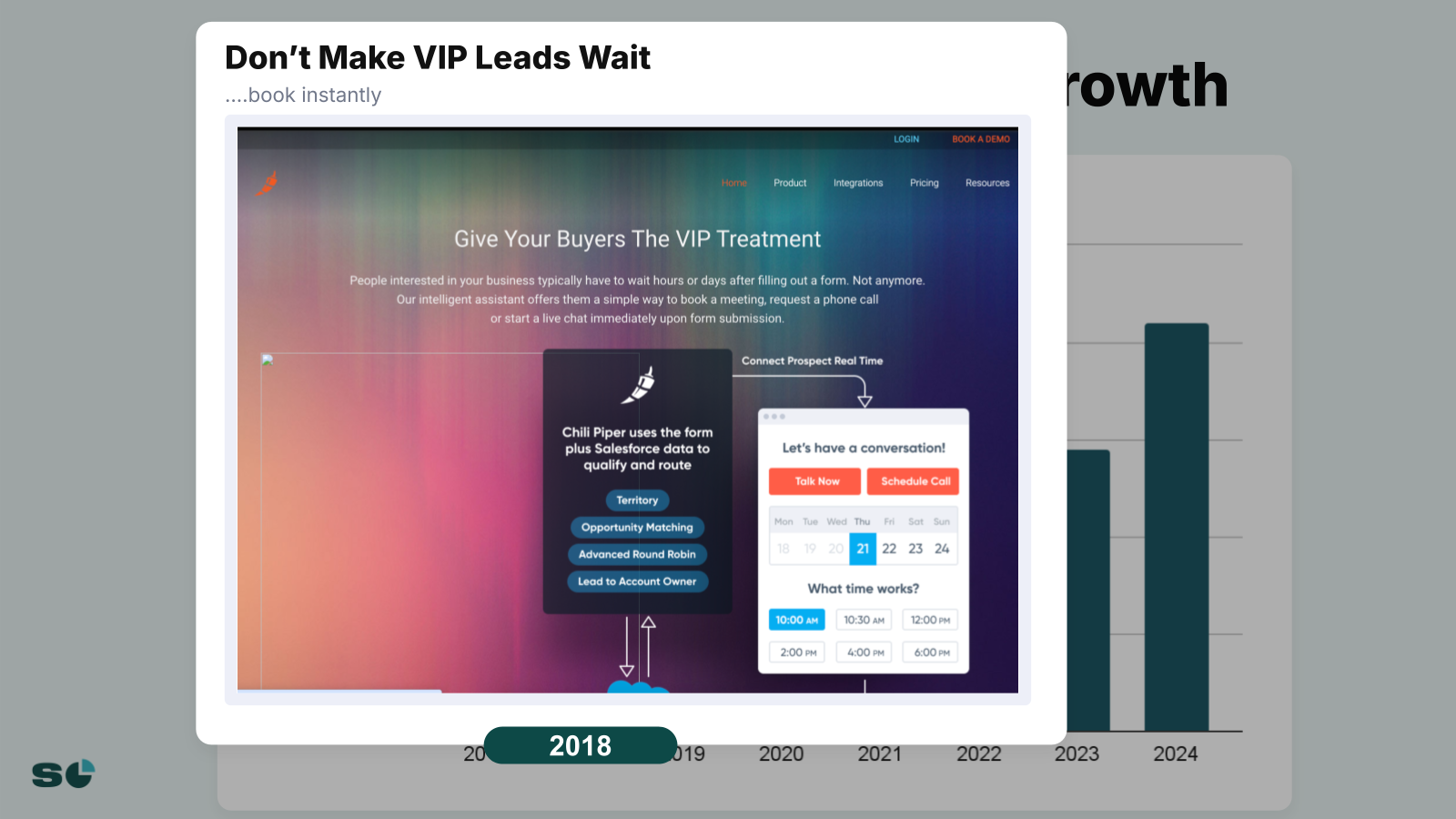
2017: Hit $3 Million ARR by Solving the “60% Demo No-Show Problem”
The real breakthrough came from an SDR who shared a shocking statistic. When people requested demos through website forms, SDRs were only converting 40% of them. “You mean to tell me that 60% of people asked for a demo and didn’t get one?” Vandenberghe asked incredulously.
This insight led to building form automation that could automatically qualify, route, and book meetings in real-time. When Segment tested this solution, their conversion rate jumped from 40% to 80%. Suddenly, Chili Piper had a product that sold itself.
The surprise came in who wanted to buy it. While Vandenberghe expected sales leaders to be the primary customers, they weren’t interested in replacing their SDR teams. Instead, marketers who were building traffic but seeing poor conversion rates became the unexpected champions of the product.
By 2017, they landed Facebook as a customer, starting with 300 licenses and eventually expanding to 2,000. The contract negotiations revealed the power of their no-discount policy. Through three rounds of procurement, Facebook kept asking for discounts, and Vandenberghe kept responding: “We have no discounts.” The deal still closed.
2018-2020: Platform Expansion Creates 141% Net Revenue Retention
As revenue more than doubled in twelve months with 130% net revenue retention annually, Chili Piper began expanding beyond their initial point solution. The $200 platform fee addition in 2018 was a clever pricing innovation – buyers paid less attention to platform fees than per-user pricing, allowing them to effectively raise prices without seeming to.
By 2020, they were attempting to create their own category: “Meeting Automation.” But as Vandenberghe admitted in the keynote, this was a struggle. When talking to VCs in the early days, the conversation would go: “We have this product that doubles inbound conversion rates.” “What category are you in?” “I don’t know, we have a product that sells and we’re growing.”
The company kept experimenting with positioning – from “meeting automation” to “inbound conversion” to eventually “demand conversion.” Each iteration brought them closer to language that resonated with their actual buyers: marketing and revenue operations teams.
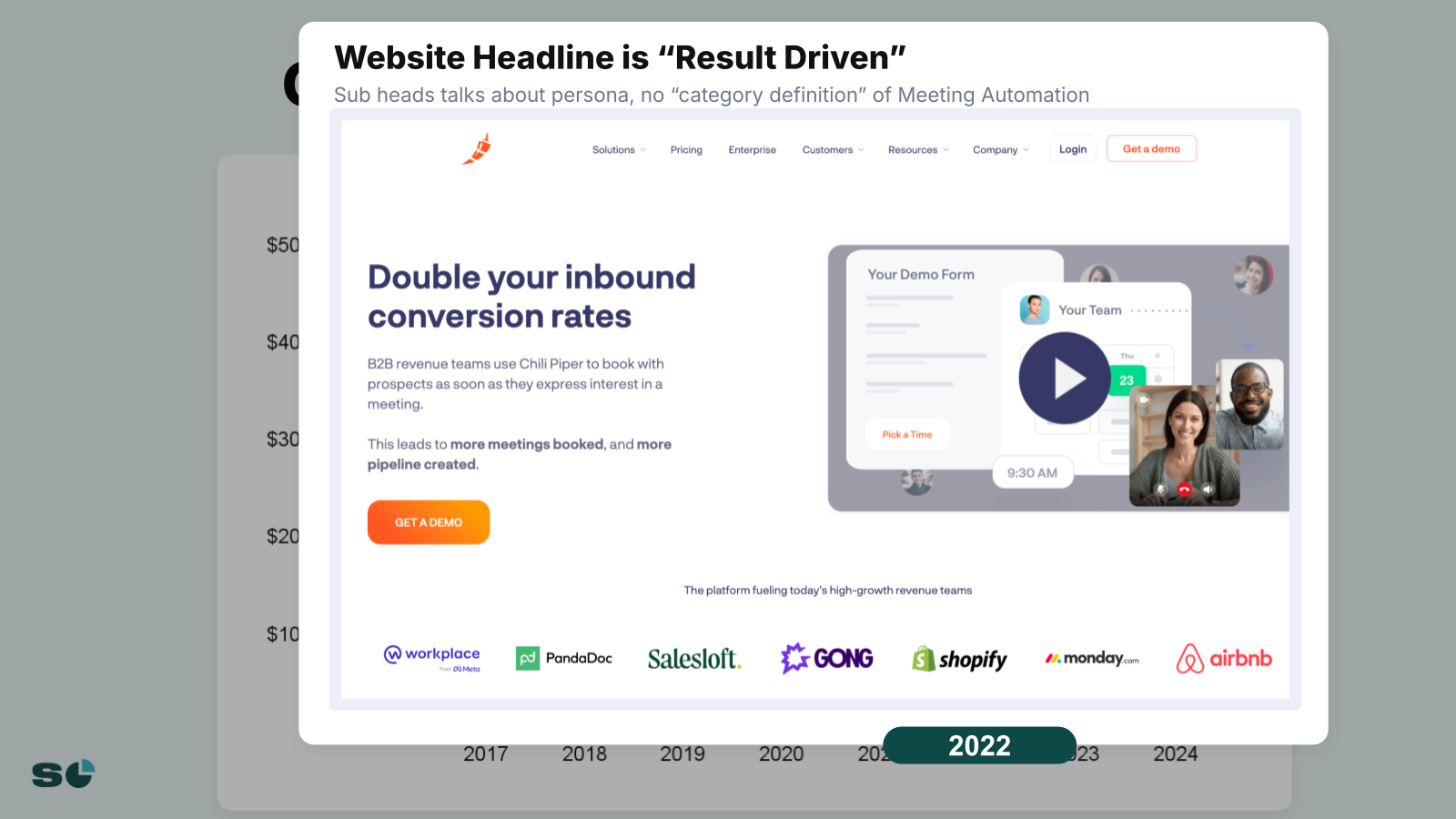
2021: Raised $33 Million at $625 Million Valuation (34x Revenue Multiple)
The Series B round in 2021 valued Chili Piper at $625 million post-money, a remarkable 34x multiple on their approximately $18 million ARR. The round included $33 million in primary capital plus another $30 million in secondary, allowing Nicolas, Alina, and early employees to take some chips off the table.
The deck they used for this raise shows their evolved thinking about the business. They positioned themselves as the first all-in-one Demand Conversion Platform, consolidating Form Routing, Chat, Lead Distribution, and Scheduling into one platform with shared teams, routing rules, and reporting.
The product roadmap they pitched included:
- Form Concierge for instant lead qualification and routing
- Distro for lead distribution with complex rules and SLAs
- Handoff for SDR to AE meeting transitions
- Chat for website visitor engagement and booking
What’s notable about this raise is what happened afterward. Unlike many startups that use venture capital to fuel aggressive expansion, Tiger Global (who led the round) essentially “disappeared” after investing. This gave Vandenberghe and team the freedom to build without investor pressure.
2022-2024: The Multi-Product Revolution Doubles Average Contract Value
The transformation of Chili Piper’s pricing and packaging strategy in 2024 represents one of the most clever moves in SaaS pricing. Vandenberghe flew to Miami to consult with a friend who was Chief Revenue Officer at Verizon, managing $80 billion in telecom pricing.
The solution was elegantly simple: price each product at $30/month individually, but offer progressive discounts for bundles:
- 1 product: $30/user/month
- 2 products: $25/user/month each ($50 total)
- 3 products: $20/user/month each ($60 total)
- 4 products: $18/user/month each ($72 total)
This telecom-inspired model created a “huge incentive” for customers to buy multiple products. The results were immediate: ACV increased from $6,000 to $10,500 in just six months. Customers would look at the pricing and naturally conclude they should buy more than one product to get better value.
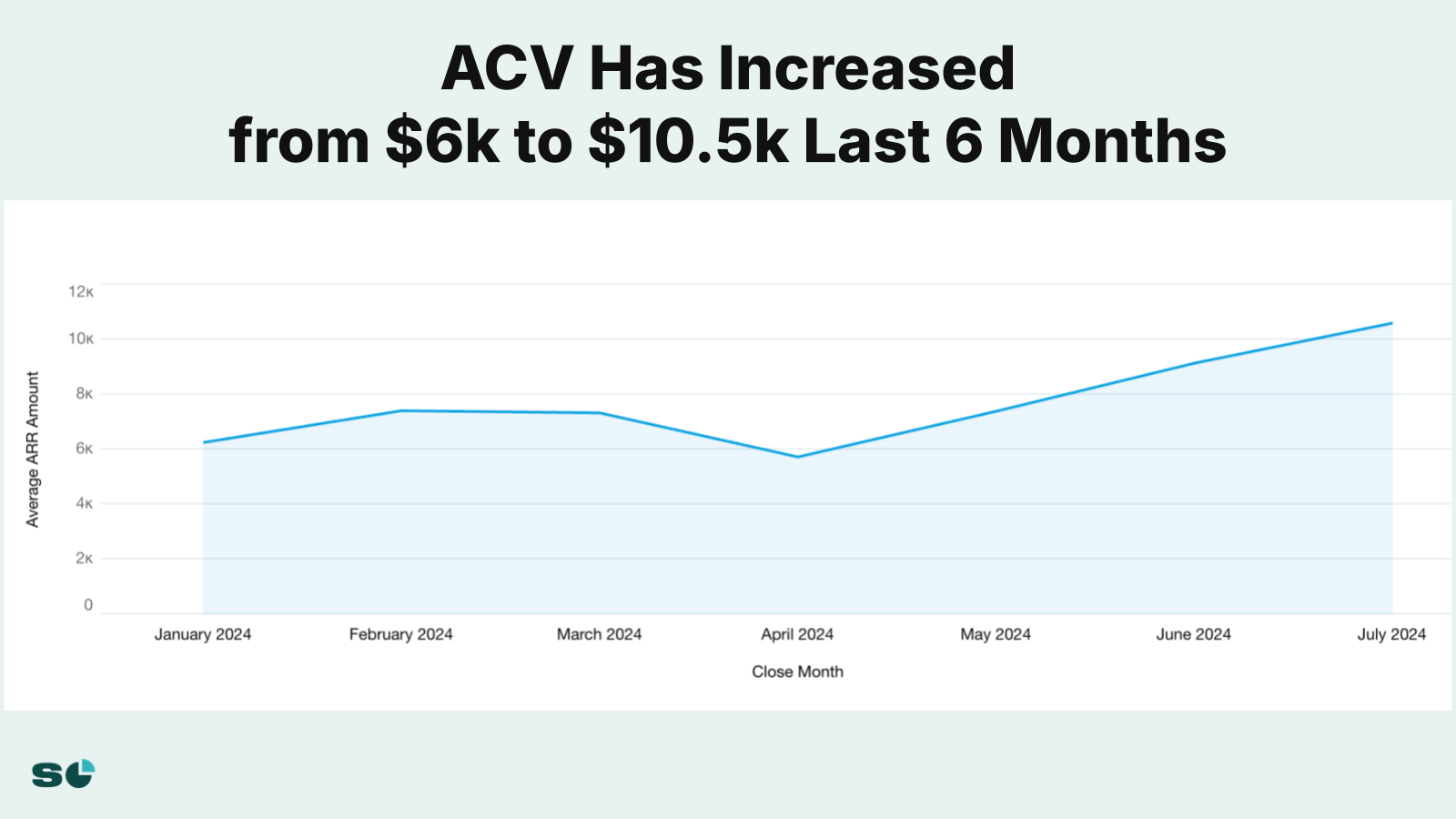
2024: Self-Service Motion Drops Customer Acquisition Cost 40%
While most B2B SaaS companies were pushing upmarket in response to the downturn, Vandenberghe made a contrarian bet on product-led growth. “Everybody says go up market, but HubSpot went self-service premium and you see it’s working really well,” he explained.
The company rebuilt their platform from scratch to enable self-service, allowing prospects to try the product without talking to sales. Combined with their “Automate Everything” initiative led by Alina (featuring weekly meetings to identify automation opportunities), this drove remarkable efficiency gains.
The numbers tell the story:
- CAC decreased from $12,500 to under $8,000
- Revenue per FTE increased from $70,000 to $200,000
- Web traffic increased over 600% as people had more time to research online
- Net revenue retention held steady at 141%
The SEO strategy also deserves mention. While not intentionally targeting it, Chili Piper somehow dominated the keyword “persuasion techniques,” bringing in thousands of clicks monthly from sales reps looking for closing tactics. This organic traffic, combined with strategic content marketing, helped fuel the self-serve engine.
Key Growth Metrics: From Bootstrap to $43 Million Revenue Machine
The evolution of Chili Piper’s metrics reveals the power of patient, strategic growth:
Revenue Milestones:
- 2018: $2 million
- 2019: $3 million
- 2020: $7 million
- 2021: $10 million (February), $14 million (August), $16.2 million (December)
- 2022: $22.2 million
- 2023: $28.2 million (October), $35 million (December)
- 2025: $43 million
Current Operating Metrics:
- 13,300 customers globally
- 256 total employees with 42 quota-carrying sales reps
- $167,000 ARR per employee (up from $70,000 low)
- 141% net revenue retention
- Average contract value: $10,500 (up 75% in six months)
The Bottom Line: Patience, Pricing, and Platform Thinking Win
Nicolas Vandenberghe’s journey with Chili Piper offers crucial lessons for SaaS founders. By starting without a product and finding a real problem worth solving, maintaining disciplined pricing that prioritized resilience over maximization, and building a true platform rather than disconnected features, they created a demand conversion powerhouse.
The company’s refusal to follow conventional wisdom – whether that meant maintaining no-discount policies when negotiating with Facebook, going self-serve when others went enterprise, or rebuilding their entire platform during a downturn – demonstrates the value of independent thinking in SaaS.
With $43 million in revenue and growing, 13,300 customers, and metrics that would make any SaaS founder envious, Chili Piper proves that you don’t need to follow the typical venture playbook to build a substantial business. Sometimes the best path is the one you create yourself, one customer conversation at a time.
If you’re an ambitious founder looking for capital to grow, we’d love to consider funding you at Founderpath. Click here to request capital.
Recent Articles
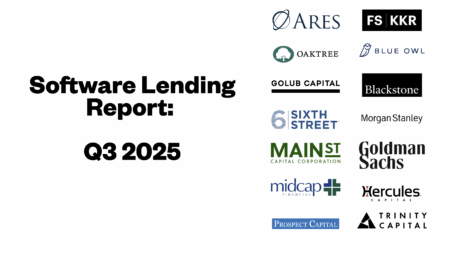
Software Debt Q3 2025 Benchmarks
As of Q3 2025, the country’s largest publicly traded direct lenders collectively hold $23.4 billion of software-related loans on their…
Top Growth Frameworks for Founders in 2025
The Ultimate Guide to Startup Growth Frameworks (With Real Founder Examples) Most founders think about growth in terms of tactics:…
Founderpath Frequently Asked Questions
What types of funding products does Founderpath offer? We currently offer two main products for B2B SaaS founders: Revenue-based financing:…